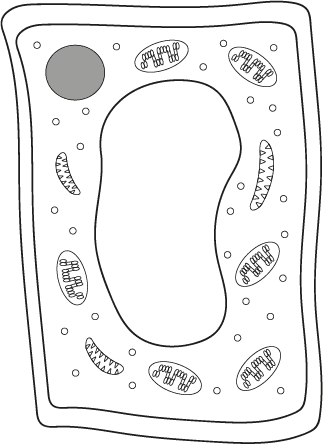Common structures of prokaryotic cells
I can identify common structures of prokaryotic cells and explain their features.
Common structures of prokaryotic cells
I can identify common structures of prokaryotic cells and explain their features.
These resources will be removed by end of Summer Term 2025.
Switch to our new teaching resources now - designed by teachers and leading subject experts, and tested in classrooms.
These resources were created for remote use during the pandemic and are not designed for classroom teaching.
Lesson details
Key learning points
- Bacteria are prokaryotic organisms.
- Common features of prokaryotic cells include the cell membrane, cytoplasm and cell wall.
- Prokaryotic cells do not have a nucleus; they store their genetic material in the cell cytoplasm.
- The genetic material is stored in one looped chromosome.
- Extra genetic material can be stored in small loops called plasmids.
Keywords
Prokaryotic - A type of cell with no membrane bound nucleus; DNA is free floating in the cytoplasm.
Plasmid - Small ring of DNA found in the cytoplasm of prokaryotic cells.
Binary fission - The form of cell division that bacteria use to replicate.
Eukaryotic - A type of cell that contains a membrane bound nucleus; the DNA is usually found inside.
Common misconception
All bacterial cells looks like the bacterial cell model.
Bacteria can come in different shapes and sizes, this will be outlined within the slide deck.
To help you plan your year 10 biology lesson on: Common structures of prokaryotic cells, download all teaching resources for free and adapt to suit your pupils' needs...
To help you plan your year 10 biology lesson on: Common structures of prokaryotic cells, download all teaching resources for free and adapt to suit your pupils' needs.
The starter quiz will activate and check your pupils' prior knowledge, with versions available both with and without answers in PDF format.
We use learning cycles to break down learning into key concepts or ideas linked to the learning outcome. Each learning cycle features explanations with checks for understanding and practice tasks with feedback. All of this is found in our slide decks, ready for you to download and edit. The practice tasks are also available as printable worksheets and some lessons have additional materials with extra material you might need for teaching the lesson.
The assessment exit quiz will test your pupils' understanding of the key learning points.
Our video is a tool for planning, showing how other teachers might teach the lesson, offering helpful tips, modelled explanations and inspiration for your own delivery in the classroom. Plus, you can set it as homework or revision for pupils and keep their learning on track by sharing an online pupil version of this lesson.
Explore more key stage 4 biology lessons from the Eukaryotic and prokaryotic cells unit, dive into the full secondary biology curriculum, or learn more about lesson planning.

Licence
Starter quiz
6 Questions





Exit quiz
6 Questions
Short ring of DNA that can cause variation when transferred.
A type of cell with no nucleus, usually between 1-5 µm in length.
A type of cell with a nucleus, usually between 5-100 µm in length.
A membrane bound sub-cellular structure that usually contains DNA.


